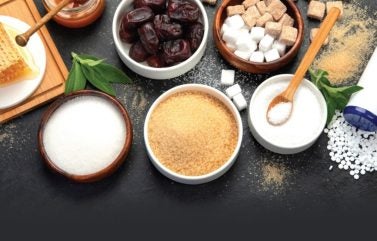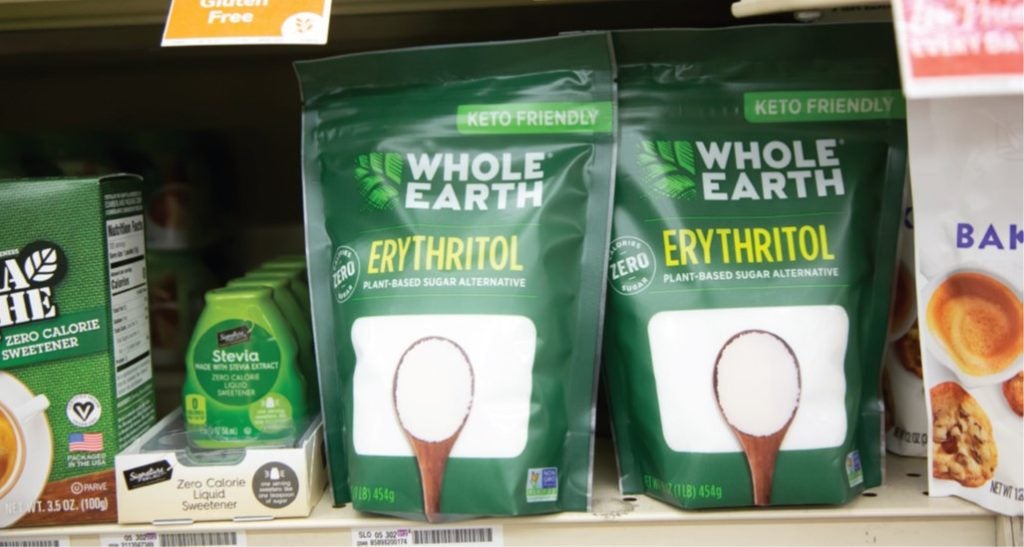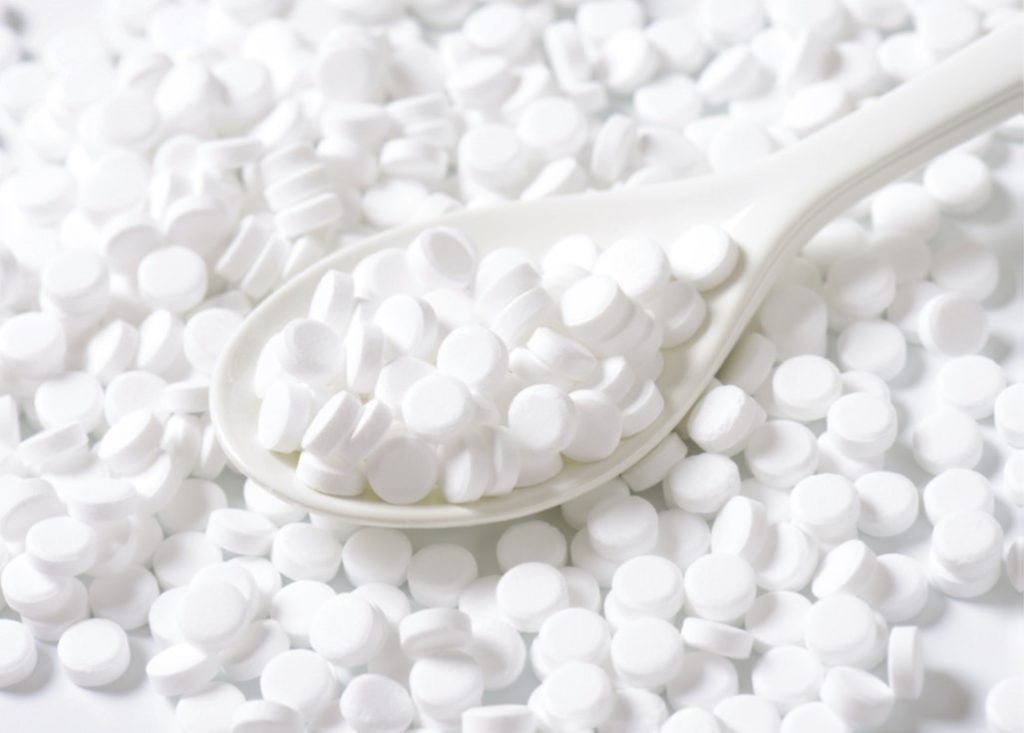
For many years, sugar has been demonised as the cause of obesity, heart problems, cardiovascular disease (CVD), cancer and diabetes. The popular press is never short of scare stories urging restrictions on sugar consumption, leaving the field open for lowcalorie sweeteners (LCS). But they, too, never seem to escape controversy. When a new alternative to sugar hits the shelves, stories of its negative health impacts soon follow.
Aspartame, a key ingredient in low-calorie beverages such as Coke Zero and Sprite Zero, as well as many brands of sugar–free chewing gum, is now inextricably linked to the risk of cancer (particularly liver cancer), despite the US Food and Drug Administration (FDA) noting that more than 100 studies have shown it to be safe for most people. Other bodies, including The European Food Safety Authority (EFSA), also approve its use.
“The FDA has labelled many artificial sweeteners as safe, but there is controversy around artificial sweeteners and their potential risk,” says Amy Shapiro, founder of Real Nutrition NYC, a private practice in New York focused on optimal nutrition, weight and wellness. “Research is ongoing, and it is important to note that many studies conclude high intakes of artificial sweeteners are associated with increased risk of cancer.”
There are plenty of examples to choose from here. A large cohort study in 2022, for instance, found that artificial sweeteners – especially aspartame and acesulfame-K – were associated with increased cancer risk. An earlier study by researchers at the Civil Hospital in Karachi, Pakistan, showed that artificial sweeteners used in large quantities can cause weight gain, promote obesity and impair normal metabolic responses.

With results like these, no wonder the latest advice from the World Health Organisation (WHO), issued in 2023, discourages the use of non-sugar sweeteners to control weight or reduce the risk of noncommunicable diseases. This recommendation is based on a systematic review of the available evidence, concluding that such sweeteners provide no long-term benefit in reducing body fat in adults or children, and that long-term use may increase the risk of Type 2 diabetes and CVD.
Yet controversy persists. Dr Kimber Stanhope, a research nutritional biologist at the University of California, Davis, has researched sugar and many types of LCS intensely, notably sugar alcohol erythritol. She remains unconvinced by many of the popular arguments. She has never seen human intervention data showing that aspartame has negative effects.
”I don’t mean population data, which shows a positive association between use of non-caloric sweeteners and CVD, diabetes and obesity – likely because people with CVD, diabetes and obesity have been instructed to reduce their sugar intake and noncaloric sweeteners help them do that,” she explains. “To know if non-caloric sweeteners cause increased risks, we need to look at dietary intervention studies. Those studies have yet to find any negative effects of aspartame, and some have shown positive effects because it is replacing sugar and its calories.”
Aspartame breaks down into two amino acids and a methyl group, all of which are produced in higher quantities by many foods. For instance, a 3oz piece of meat provides far higher levels of those amino acids than a 12oz soda containing aspartame. In short, you can drink several aspartame-sweetened sodas each day – and you’ll still have less of those amino acids than from a steak. Furthermore, bodies use those amino acids to build and replace proteins.
“You will also get fewer methyl groups from those sodas than you get from whole fruit, and whole fruit consumption is associated with a low risk of CVD, diabetes and obesity,” Stanhope adds. “Therefore, it is not plausible to me that the small amounts of amino acids and methyl groups in aspartamesweetened soda can cause disease, but the higher amounts in meat and fruit do not.”
Ending the controversy?
As the debate over artificial sweeteners rumbles on, natural alternatives are emerging. One good example is sugar alcohols, which contain far fewer calories than sugar and break down slowly, in the gut. This helps prevent spikes in blood sugar and insulin levels.
“They are a good option for individuals with diabetes and are a healthier alternative to sugar because of their lower calorie content and reduced glycemic response,” notes Shapiro. “Nevertheless, when consumed in large amounts they can cause gastrointestinal problems such as abdominal pain, bloating and diarrhoea.”
$225.86m
The expected value of the global erythritol market in 2023, reaching around $449.6m by 2033.
Future Market Insights
This can be explained by how sugar alcohols are digested. Because the process happens slowly they have more time to feed bacteria in the gut, which can produce excess gas – though individual differences in metabolism, gut microbiome composition and dietary habits all determine how people respond.
$375.5m
The worth of the global aspartame market in 2021, which is expected to grow to $561.7m by 2031.
Allied Market Research
The possible long-term health risks of sugar alcohol are still being explored, but a 2023 observational study published in Nature Medicine found a link between using erythritol as an added sweetener and CVD events in people with heart disease, or who had risk factors such as diabetes and high blood pressure. Even so, Shapiro concedes that these findings have not been confirmed in subsequent studies.

Stanhope would welcome this admission, given that she found it “distressing” that the article was published in the first place.
“It was missing the most vital data,” she says. “The data where erythritol is fed to human subjects for a period of time to look for upregulated platelet activation should really have been gathered before publication. It got published because it is such a hot topic and the media jumps on any hint that sugar substitutes are worse than sugar.”
Interest in sugar alcohol is driven by the ‘natural’ versus ‘artificial’ debate. Deriving sugar alcohol from whole plants is extremely expensive because the levels are so low, so most are manufactured using genetically programmed yeasts, which mimic the same metabolic pathways of plants but can produce specific components in large quantities.
0.2calories
The amount of calories per gram that Erythritol contains, making it 60-80% as sweet as sugar.
“Consumers tend to label sweeteners as artificial if they are made chemically, as is the case with aspartame, but consider them natural if they are contained in a plant,” emphasises Stanhope. “However, it is very costly to isolate erythritol from plants. Therefore, erythritol is made by yeasts. That is the way of the future, and it is ecologically beneficial to use yeasts.”
Erythritol seems to offer a healthy replacement for sugar because it contains almost no calories. Other sugar alcohols contain 2.4 calories per gram, compared to four calories per gram for regular sugar. Stanhope is currently feeding human subjects erythritol, and then measuring the type of outcomes reported in the Nature article, including looking for signs of platelet activation. As yet, there are no completed trials on the metabolic risk factors of erythritol, though it has seen positive results in terms of blood glucose response.
2.4calories
The calories per gram that Xylitol contains – despite boasting the same sweetness as sugar.
FDA
“There is a lot of work still to be done before we know whether erythritol is healthy,” Stanhope stresses. “And, assuming the dietary interventions studies do confirm it is safe, it may be hard to convince consumers it is. However, maybe we shouldn’t try. All sweeteners have one thing in common – and that of course is that they are all sweet, which raises the question of whether the more we consume sweet things, the more we want.”
To put it differently, is replacing sugar with something else sweet simply maintaining our preference for sweet tastes, thus making it easier to crash when we are presented with real sugar in the form of snacks, cakes and sweets?
Confronting our craving
One researcher who has studied how food preferences change from early childhood to maturity is Dr Julie Mennella of the Monell Chemical Senses Center, the world’s only independent, non-profit scientific institute dedicated to interdisciplinary research on taste and smell.
“There is an interesting developmental change in terms of sweet taste,” she explains. “Infants are born with a preference for it as a quality of human milk – then children prefer higher levels of sweetness, but that decreases after growth during mid-adolescence. We evolved in an environment with no artificial sweeteners, and the sweet taste is a signal for calories, so a child prefers sweetness more than adults during periods of maximal growth.”
The preference for sweet and salt decreases after bone growth, but Mennella feels that children are now more vulnerable to an environment where sweets are everywhere. She believes that when children are learning how and what to eat, they are especially vulnerable, and will prefer sweet foods, noting not only that there is little research on the effect of sweeteners on children, but also that their efficacy in preventing obesity is debatable. In other words, do they they just teach children that foods should be sweet?
Sugar alcohols show promise because they are sweet – erythritol has around 70% of the sweetness of sucrose – while also having less of the unpleasant aftertaste that is reported with acesulfame potassium and other artificial sweeteners. In the case of erythritol, meanwhile, it’s metabolised in a way that could limit health risks.
Once you add the fact that erythritol has no calories, and is so small that it doesn’t cause the gastrointestinal issues of other sugar alcohols, and no wonder the market is expected to grow from $225m in 2023 to around $449m by 2033. But does it still exacerbate the problem of cravings for sweetness?
Shapiro, for her part, advises caution. “I believe the use of artificial sweeteners can increase sweet cravings as our threshold for how sweet something should taste increases,” she says. “If you use them, use them sparingly.” That seems like good advice – whatever kind of sugar you’re tempted by.





